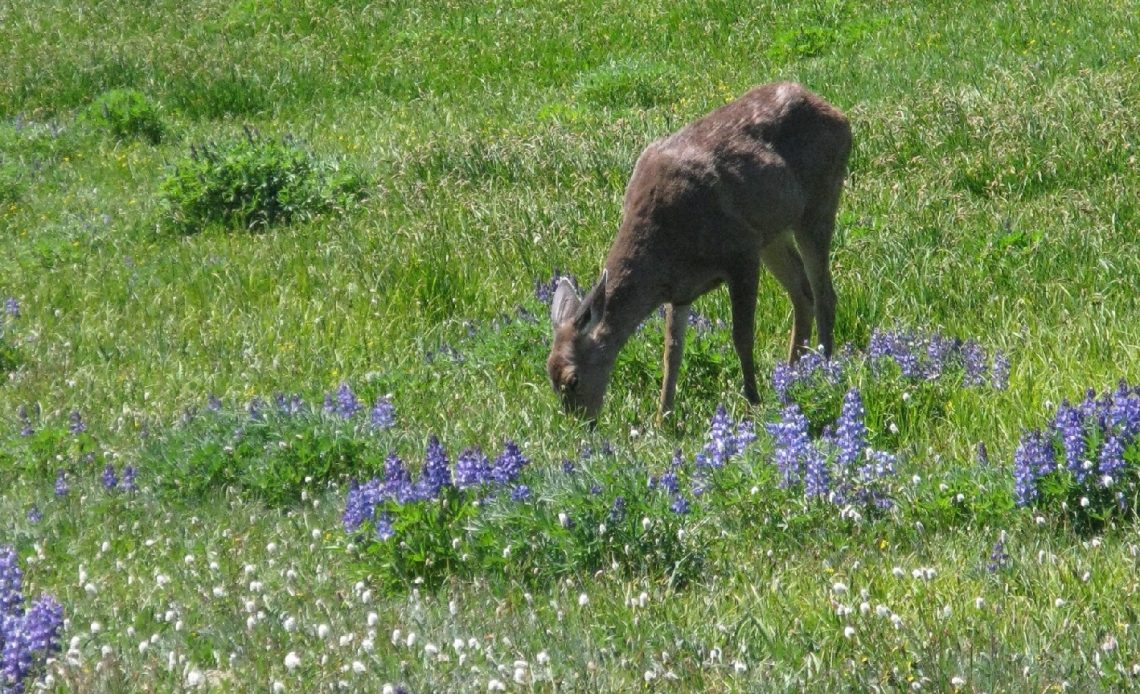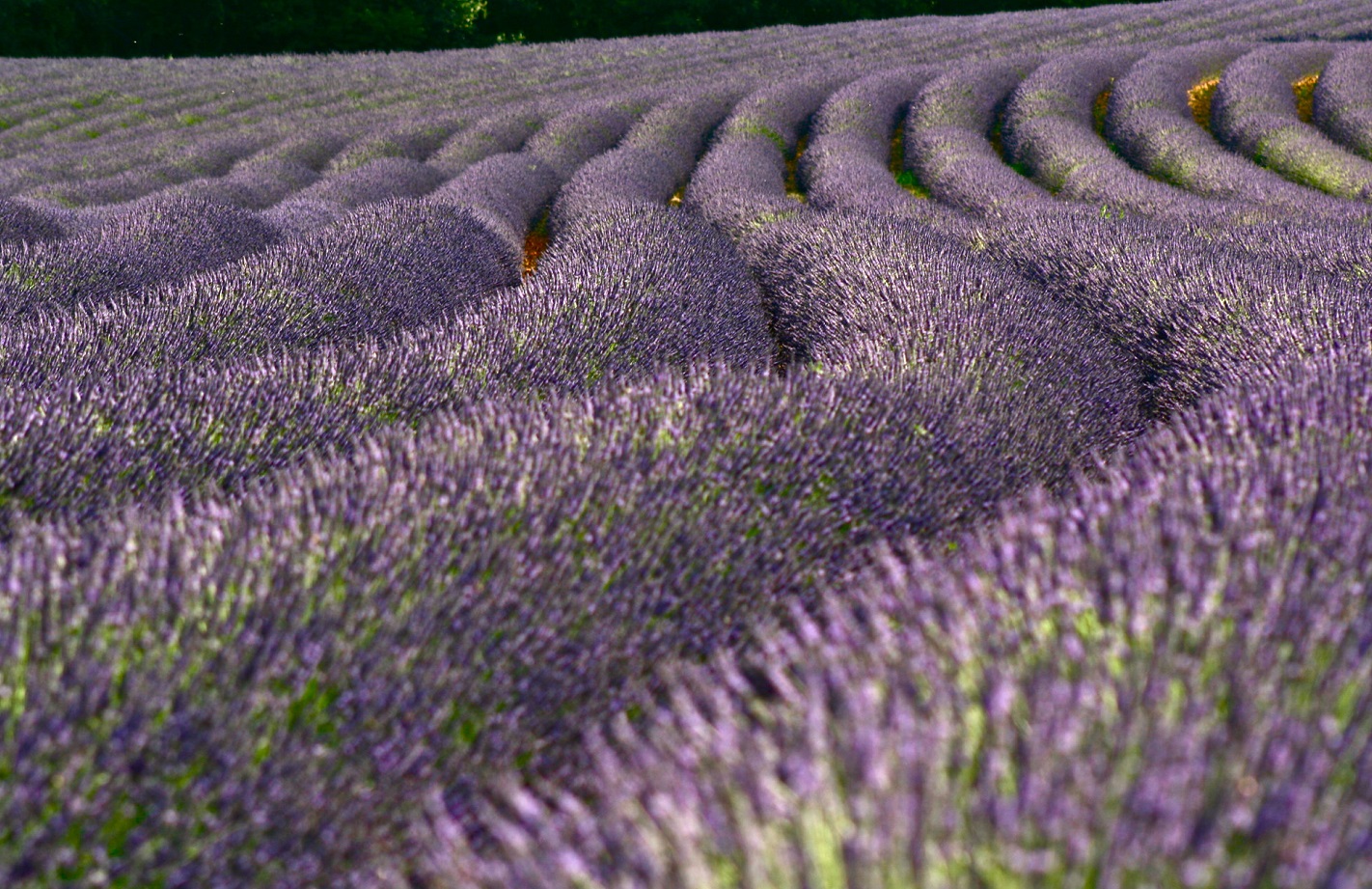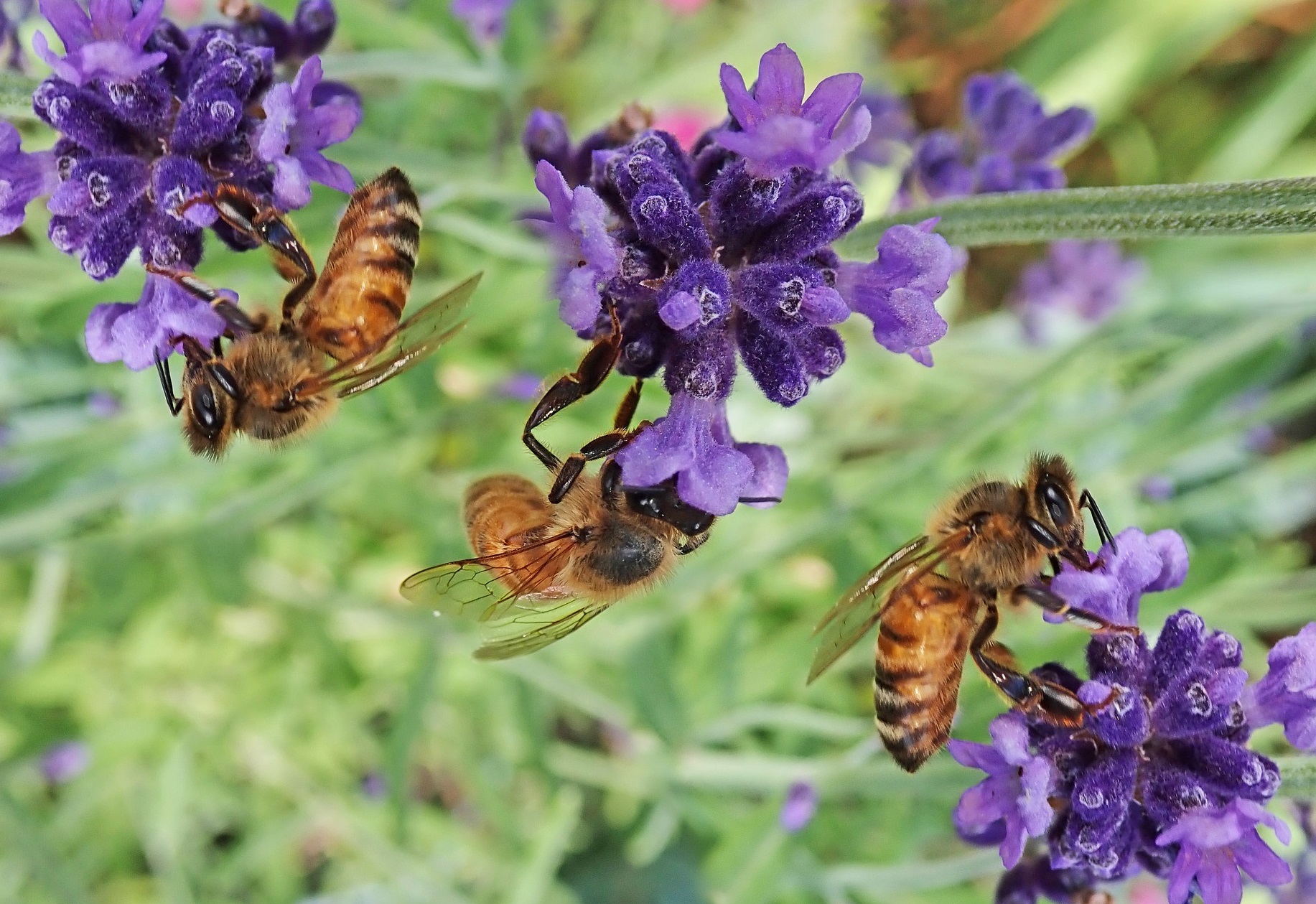

We’re here to help! Wild Yards is a completely free website that is 100% dedicated to helping you create a wildlife-friendly, sustainable yard. Read more
WildYards is reader-supported. When you buy a product through a link on our site, we may earn a comission. Every product is independently selected by our (obsessive) editors and our reviews are unbiased and objective. Read more about our mission or our privacy policy.
Planning a deer-resistant garden can be daunting because no plant is 100% deer-proof. But some plants have a reputation for repelling deer better than others. For instance, many herbs are a turn-off for hungry deer, including dill, lemongrass, and sage. But if you want an herb with a little more color, you may be wondering, do deer eat lavender?
Generally speaking, deer do not eat lavender, making it one of the most deer-resistant plants. Deer dislike this fragrant shrub not only because of its strong scent but also because of its unpalatable fuzzy leaves.
Do deer eat lavender or do they dislike it?
Deer like to eat plants that are tender, nutrient-dense, and full of moisture. They seek out flowers like hydrangeas and azaleas because these plants tend to be taken care of. Ornamental flowers usually get plant food to help improve flower production, which boosts their vitamin and mineral content. They’re also watered regularly, meaning they’re a better source of moisture than native grasses and forbs.
By contrast, lavender is a low-maintenance shrub. It doesn’t like to be planted in the nutrient-rich soils that make other flowers so tasty. Lavender also requires extremely dry conditions in order to stay healthy. If it gets too much moisture, it can develop root rot and die. So because lavender doesn’t take in much water, it’s not as tender and juicy as, say, petunias.
This lack of water makes lavender unappealing to the deer for another reason. Because this herb doesn’t require much water, its oils are more concentrated. That’s why lavender is so fragrant. Each leaf, flower, and stem is full of strong-smelling, bitter-tasting oils that deer can’t stand.
Lavender is so deer-resistant that it’s perfect for companion planting. Growing lavender near wildlife favorites can help deter deer, rabbits, and many insects, too, including aphids. Wandering deer will smell the lavender’s strong perfume, assume it’s the only plant nearby, and leave to find something else.

Do deer eat lavender if there’s nothing else around?
It doesn’t happen often, but deer do sometimes eat the fragrant herbs they hate. But why do deer eat lavender if it’s supposed to be so deer-resistant? Well, desperate times call for desperate measures. Deer must eat roughly 10% of their body weight in roughage every day, and if there isn’t much vegetation around for them to browse on, they’ll be forced to start eating their least-favorite plants.
If your region is going through a dry spell, or if there’s a surge in the local deer population, the answer to the question “do deer eat lavender?” may be yes, after all. Deer have been known to eat lavender when there’s nothing else to chew on. But this is the last resort. When deer do eat lavender, they prefer to eat the newest shoots and the tenderest stems. They dislike the more mature growth, which has a tough, woody texture.
Under extreme circumstances, deer may also eat the flowers of your lavender plant. Because flowering plants put so much energy into producing blooms, they tend to be the most nutritious part of the plant. Even though lavender flowers aren’t a fantastic source of moisture, they’re better than nothing at all.
What types of wildlife does lavender attract?
Lavender may not be popular with deer, but it is a hit with pollinating insects. Bees love to peruse lavender’s multiple blossoms, which are a decent source of antioxidant-rich pollen. These fragrant flowers also draw butterflies and moths, who enjoy feeding on their sweet nectar.
Hummingbirds, too, like to visit lavender flowers, and, they may get into a few squabbles with wasps and hornets over who gets which blossoms. These territorial birds will fight hard to defend food sources they’ve deemed valuable. So if you want to attract more hummingbirds to your garden, lavender can help you do just that.
Lavender is great for attracting all of a gardener’s favorite insects — and it’s just as good at keeping all of the worst insects away. Lavender’s strong smell also repels flies and mosquitoes. This makes it perfect for planting near windows and doors where flies can easily enter your home. Keeping lavender in pots near your pool or pond can help to keep the mosquito population down, too.

What’s the best way to include lavender in your deer-resistant garden?
Do deer eat lavender? Hardly ever, but just because this plant is deer-resistant doesn’t necessarily mean that it’s a perfect fit for your backyard. Lavender requires sandy soil and lots of sun in order to thrive. If your backyard doesn’t meet these requirements, you may have to get creative about how you include it in your deer-resistant garden.
If the soil in your backyard is rich and loamy and holds a lot of moisture, lavender won’t like it. You’ll need to grow your lavender in pots using a sandy potting soil mix, like those designed for cactus. Well-draining soil is essential for keeping lavender’s sensitive root systems dry between waterings.
Most lavender varieties require at least six hours of sun a day. But if your backyard is full of trees, you’ll need a shade tolerant variety. Both French and English lavender can handle living in the shade, although low light conditions may result in stunted blooms.
What other plants do deer hate?
Beautiful and deer-resistant, lavender can play an important role in your garden. But what’s a flower garden without a little variety? Even though deer tend to avoid eating it, you can increase the odds that they’ll leave your lavender alone by planting it alongside a few other plants that deer hate.
Rosemary
Deer dislike this hardy flowering shrub for the same reasons they dislike lavender. Rosemary is incredibly fragrant. Each needle-like leaf is coated in strong-smelling oils, and although these oils are treasured by essential oil enthusiasts, deer don’t like the way they taste. Like lavender, rosemary thrives in well-draining, sandy soils where it receives full to partial sunlight. Between March and May, this herb produces multiple nectar-rich blooms that bees, butterflies, and other pollinators enjoy.
Lamb’s Ear
If you need an understated accent plant to fill in around your ornamentals, lamb’s ear is just perfect. This plant’s soft, woolly gray-green leaves have an unpleasant texture, so the deer won’t be tempted to nibble on them. In late spring and early summer, lamb’s ear produces tall pink-ish purple flowers reminiscent of lavender. But if you want your lamb’s ear to serve as a backdrop, not a focal point, pruning it in early spring can prevent these buds from developing.
Dusty Miller
This interesting herb’s silvery, frond-like leaves make it an attractive ornamental shrub. Deer hate its velvety foliage and unpleasant taste. And because the deer are so hesitant to nibble on it, this plant can quickly reach its full size of about two feet tall by two feet wide. Dusty miller grows in full to partial sun, so it’s suitable for planting near your lavender.
Floss Flower
With clusters of small purple, white, pink, or blue flowers that look similar to thistles, but are softer to the touch, floss flower is a unique addition to your landscaping. This plant’s foliage is rough in texture, so the deer avoid it. It grows best in hot climates, thriving in partial shade where it can grow to be three feet tall. Indeed, this plant grows so fast and spreads so well that many gardeners consider it to be invasive.
Russian Sage
With gray-green foliage and tall purple flowers, Russian sage looks a lot like lavender. It also enjoys similar growing conditions, preferring nutrient-deficient soils and lots of sunlight. However, Russian sage is less sensitive to overwatering than lavender. If you’ve never had much luck keeping lavender alive, consider Russian sage as a suitable alternative.
Yarrow
Although white and yellow are the most common colors, yarrow comes in a variety of shades, including purple, red, and pink. Yarrow’s fern-like leaves and bitter flowers will keep the deer away. But butterflies, bees, and hummingbirds won’t hesitate to visit them. Ladybugs in particular are attracted to yarrow’s flowers, which provide them with a safe place to lay their eggs.
Deer don’t like to eat lavender. In rare instances, they may take a few bites out of them. But by planting your lavender with other plants that deer hate, you’ll be increasing your odds of keeping these garden pests out of your precious landscaping.
